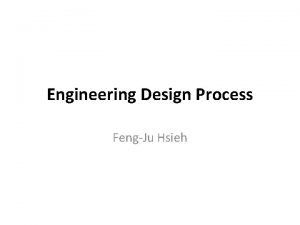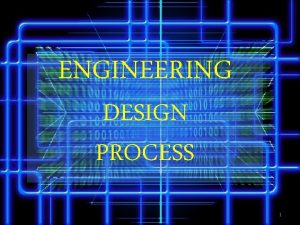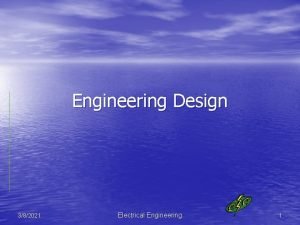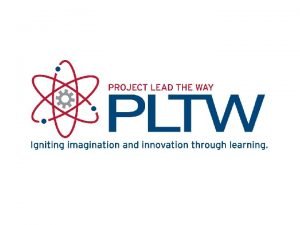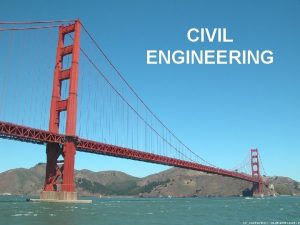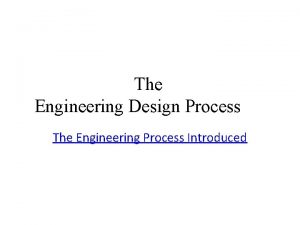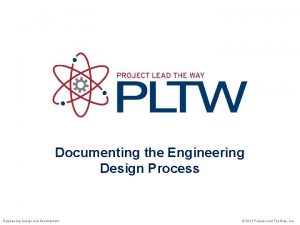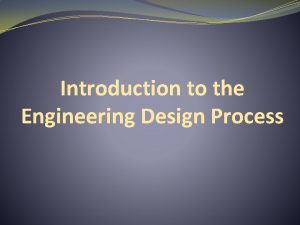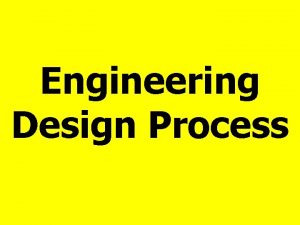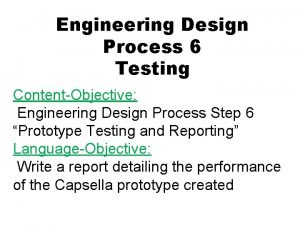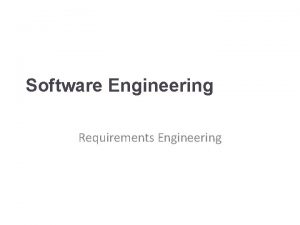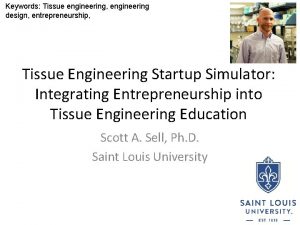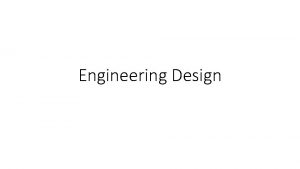Engineering Design Process Design Process The design process















- Slides: 15

Engineering Design Process


Design Process The design process is a methodology that can facilitate technological problem-solving. It is an interactive process that begins with an identified need or opportunity and progresses through a series of pre-defined steps to final implemented solution.

Opportunities An engineering design activity always occurs in response to a human need. Before you can develop a problem definition statement for a design problem, you need to recognise a need for a new product, system, or machine.

Design Brief A critical step in design is to identify the problem by identifying the design objectives or goals. For each objective, criteria that quantify or qualify that design objective, must be assigned. A list of specifications/criteria/requirements and restrictions should be completed.

Investigate/Research Before you can go further into the design process, you need to collect all the information available that relates to the problem.

Investigate/Research (continued. . . ) Consider the following: Suitable materials for the project Safety factors related to the design problem Write letters to manufacturers/shops Researching using library, internet, professionals, etc. Carry out a survey/questionnaire and present the results as a pictogram/table of results Collect pictures of existing products (photographs, magazine/catalogue images, etc. )

Generate Options The next step in the design process begins with creativity in generating new ideas that might solve the problem. Start with existing solutions and then tear them apart. Find out what's wrong with those solutions and find out how to improve on their weaknesses. Draw at least 3 different ideas with notes.

Select Best Option Once you've thought of alternate solutions to your design problem, you need to analyse those solutions and then decide which solution is best suited for implementation. Use a table or design matrix to indicate whether or not each of your alternative solutions meets the solution objectives by writing yes or no in the space provided.

Develop Solution The best solution option is developed in detail at this stage. This often involves various engineering calculations and the development of detail and assembly drawings.

Develop Solution (continued. . . ) You would need to develop both isometric drawings/plans (3 -dimensional view), and orthographic drawings/plans (detailed views of each individual side). Following this, a physical or virtual prototype is usually produced and tested to ensure functional compliance.

Evaluate/Redesign Evaluate your product. State the good and bad points of the design. Does the solution answer the design brief?

Evaluate/Redesign (continued. . . ) Prototype testing will often reveal the need for improvement in a number of areas. The need to minimise weight and reduce production costs, for example, are sometimes identified at this stage. The design process essentially repeats at this stage in an effort to optimise the design. Hence, it becomes a cyclic process.

Solutions/Outcomes After the prototype is evaluated and redesigned (if necessary) production of final drawings/plans would be made and the final product would be created.

 Hát kết hợp bộ gõ cơ thể
Hát kết hợp bộ gõ cơ thể Frameset trong html5
Frameset trong html5 Bổ thể
Bổ thể Tỉ lệ cơ thể trẻ em
Tỉ lệ cơ thể trẻ em Voi kéo gỗ như thế nào
Voi kéo gỗ như thế nào Chụp tư thế worms-breton
Chụp tư thế worms-breton Alleluia hat len nguoi oi
Alleluia hat len nguoi oi Môn thể thao bắt đầu bằng chữ f
Môn thể thao bắt đầu bằng chữ f Thế nào là hệ số cao nhất
Thế nào là hệ số cao nhất Các châu lục và đại dương trên thế giới
Các châu lục và đại dương trên thế giới Công thức tính thế năng
Công thức tính thế năng Trời xanh đây là của chúng ta thể thơ
Trời xanh đây là của chúng ta thể thơ Mật thư tọa độ 5x5
Mật thư tọa độ 5x5 Phép trừ bù
Phép trừ bù độ dài liên kết
độ dài liên kết Các châu lục và đại dương trên thế giới
Các châu lục và đại dương trên thế giới
















